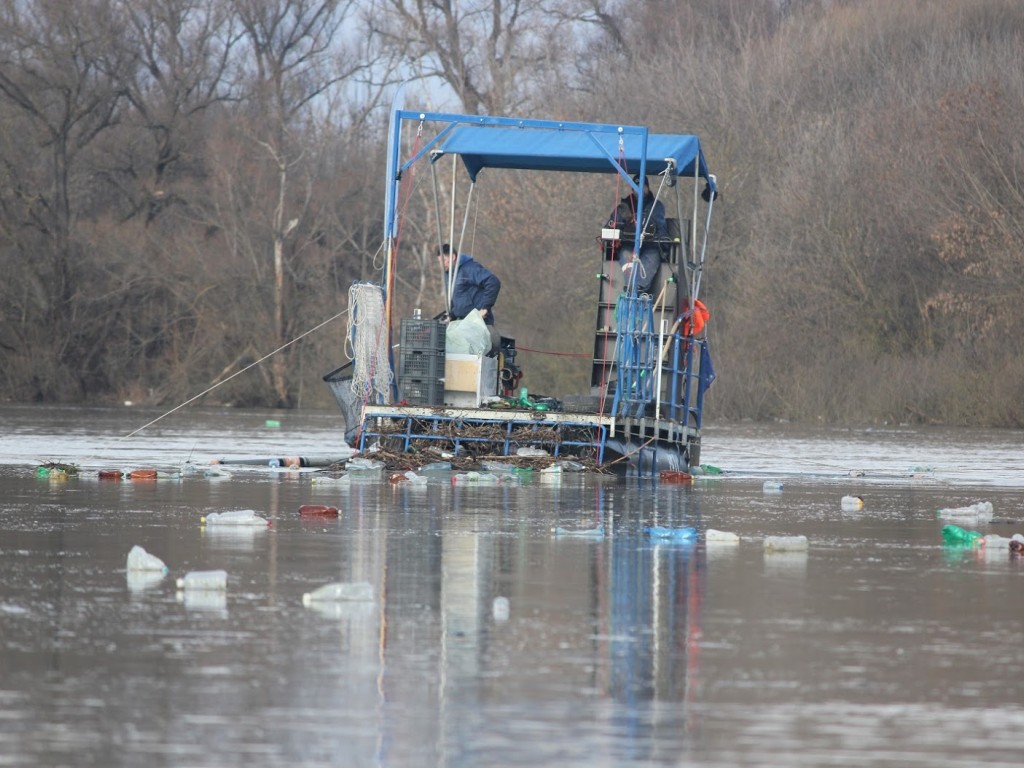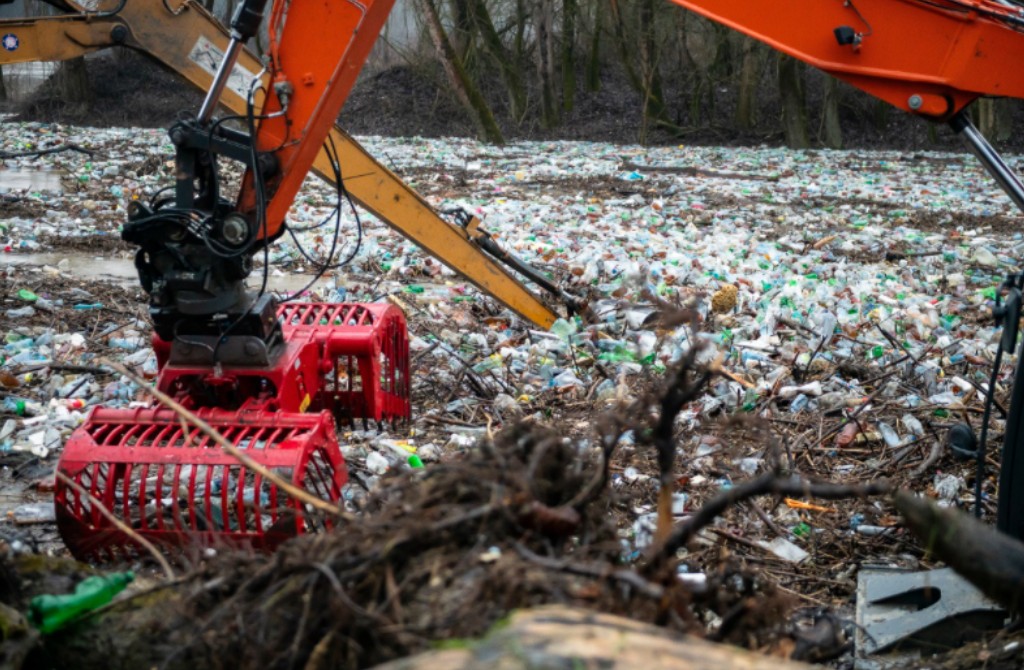Tid(y)Up - Managing the latest winter river plastic floods
15-02-2021
Despite the harsh weather, large scale river cleanup interventions are taking place in multiple locations on one of Europe's most heavily polluted river, the Tisza. NGOs, municipalities and water management authorities are working together trying to stop the latest waves of pollution originating from Ukraine and Romania. VIDEO and field report.
In the last days of January 2021, the Hungarian environmental initiative Plastic CUP drew attention to the newly formed plastic deposits on the Latorca river (Ukraine). 10 days later the pollution mobilized and arrived into the EU via Slovakian and Hungarian waters. The Northern Hungary Water Directorate (ÉMVIZIG) and the Plastic CUP's waste collector boat first took up the fight against the pollution. The rapid response waste collector ship PETII lifted floating waste with waste deflection tentacles and a waste lifting basket mounted on the boat's bow. Sorting had already begun on board and later continued ashore.
Despite all efforts a significant amount of plastic has been deposited in the Bodrog floodplain, which will set in motion again as the flood wave recedes. In the meantime experts monitor the movement of waste barriers with bottles with GPS transmitters and is ready to intervene again if necessary.

The rapid response plastic collecting workboat PETII on Bodrog, affluent river of Tisza, managing the plastic flood in February, 2021.
Situation on the Tisza
One week later, floods brought massive amounts of waste into Hungary from Ukraine and Romania. The Upper Tisza Region Water Directorate (FETIVIZIG) responded to the waste flood with a partial river blockade. At Vásárosnamény, FETIVIZIG was no longer confronted only with Ukrainian, but also with a considerable amount of Romanian pollution entering Hungarian waters via the Szamos. The heavy-duty river waste collecting machinery was tested earlier but this was the first time when the collected waste was not deposited entirely. The Rapid Response Waste Management Team arrived to the location in 24 hrs and started to separate the riverine waste to communal and recyclable fractions (plastic, metal, glass). According to the cooperation agreement concluded with the OVF (Water Management Directorate) riverine waste is no longer diverted into the nearest landfill. Instead the immediate deposition, a selection phase is added to the process. Approximately the 65% of the riverine waste can be recycled once the selection is carried out by industrial standards. In addition to setting an example, selection also has a serious cost-reducing effect, as only a fraction of the total volume of the waste is deposited, most of it is returned to the material cycle, providing secondary raw materials to mainly domestic recycling companies. The local team received a lot of help from the Upper Tisza Diving and Rescue Association, who, in addition to setting up mobile workstations, also helped with the selection.
- In the Upper Tisza river basin, only 1-4 millimeters of precipitation has fallen on average in the last 24 hours. However, as a result of the rains of the last few days, floods started on the rivers, and at the same time municipal waste pollution also reached the Upper Tisza - Gabriella Siklós, a spokeswoman for water, told MTI on 6 February.
In its announcement, OVF (Water Management Directorate) reported that according to camera images and dams, on Friday morning inorganic waste arrived 1-2 minutes per minute at Raho in Ukraine, 30-40 minutes per minute at the Hungarian border at Tiszabecs, and 60-80 per minute at Csenger in Szamos. Due to the large amount of municipal waste, the Upper Tisza Region Water Directorate ordered a third-level water quality remediation intervention at noon on Thursday. The waste collecting device was set up at the Vásárosnamény bridge on Thursday and a partial river barrier was installed.

Water authorities handled thousands of tons of driftwood and plastic waste for days, in Vásárosnamény, Upper-Tisza
Prevention in the source area
At the end of January, due to the pollution in Latorca, environmental activists turned to the head of the Transcarpathian Government Office to help eliminate the waste barriers, thereby preventing pollution in Bodrog. Unfortunately, they have not received a reply to their letter to date. The preventive intervention took too long to organize and as a consequence the pollution wave reached the EU.
In the meantime, Hungarian experts initiated cross-boundary projects and roundtable discussions. They agreed with the mayor of Kőrösmező (Yasinya, Ukraine) on February 9. that to prevent further waste pollution, setting up a waste sorting facility at the Tisza spring can provide an option. In this regard, they expect the professional help of the Plastic CUP and the non-governmental organization's waste management partner, the Association of Environmental Service Providers and Manufacturers, and the technology transfer necessary for its implementation.
Experts are constantly looking for a solution to river pollution, and part of the effort is launching crowd-funding campaigns for upstream waster management and environmental initiatives. Béla Francz (Ukraine) is collecting 10 cubic metres of domestic waste on a daily basis by using the truck provided by Hungarian supporters which otherwise would end up in the Tisza. The project #folyomentoteherauto is setting a great example on how much can be achieved with a little investment.
Another wayout from this complex situation can be provided by cross border cooperations like the TidyUp project, carried out within the framework of the Danube Transnational Programme.
find out more #dtptidyup #interregtidyup
text and translation by Attila D. Molnár, Gergely Hankó, Szilvia Dóra, Anna Istenes
photos by MTI, Plastic CUP initiative
